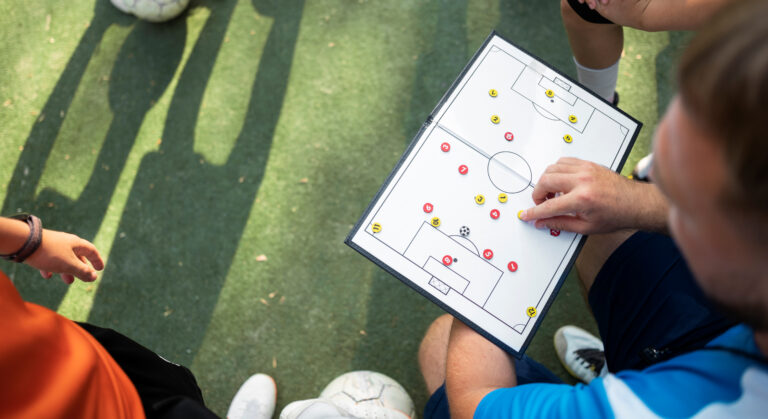Work-Life Balance
How To Practice Work-Life Balance As An Athlete
Balancing the demands of a rigorous athletic career with personal and family life can be a challenging feat. Athletes often face intense training schedules, travel, and the pressure to perform at their best. However, finding a healthy work-life balance is essential not only for the well-being of athletes but also for their long-term success and happiness. In this guide, we’ll explore various strategies and tips for athletes to practice work-life balance effectively.
Recognizing the Importance of Work-Life Balance
Athletes often dedicate a significant portion of their lives to their sport. The drive for success and the desire to be the best can sometimes lead to neglecting other aspects of life. However, achieving work-life balance is crucial for several reasons:
- Physical and Mental Health: Overtraining and excessive stress can lead to burnout, injuries, and mental health issues. Balancing work and personal life helps reduce these risks.
- Sustained Performance: A well-rounded life can enhance an athlete’s overall performance. Time spent with family and pursuing personal interests can provide valuable mental and emotional rejuvenation.
- Longevity: A balanced life is a sustainable one. By managing stress and maintaining a healthy lifestyle, athletes can extend their careers.
- Personal Fulfillment: Life isn’t just about sports. Finding time for personal relationships and interests outside of athletics can lead to a more fulfilling life.
Tips for Athletes to Achieve Work-Life Balance
- Set Boundaries: Establish clear boundaries between your athletic commitments and personal life. Designate specific times for training and competition and ensure there’s time for family, friends, and leisure activities.
- Time Management: Efficiently manage your time to make the most of both your athletic and personal life. Use calendars and schedules to plan your training, recovery, and downtime.
- Prioritize Rest and Recovery: Recovery is an integral part of an athlete’s routine. Prioritize sleep, nutrition, and relaxation to maintain your physical and mental well-being.
- Delegate When Possible: If you have the resources, consider delegating tasks like managing your schedule, logistics, or administrative work to professionals. This allows you to focus on your athletic career and personal life.
- Effective Communication: Communicate openly with your coach, teammates, and family. Let them know your boundaries and constraints, so they can support your efforts to achieve balance.
- Quality Over Quantity: It’s not about the amount of time you spend with your loved ones but the quality of that time. Make an effort to be fully present and engaged when you’re with family and friends.
- Make Time for Hobbies: Pursue hobbies and interests outside of sports. Whether it’s music, art, reading, or any other passion, having activities that bring you joy can significantly contribute to work-life balance.
- Learn to Say No: It’s essential to understand your limitations and say no when necessary. Overcommitting can lead to stress and hinder your pursuit of balance.
- Set Goals and Priorities: Define your long-term goals both in sports and in life. Prioritize what matters most to you and align your actions accordingly.
- Family Support: Engage your family in your athletic journey. Involving them in your pursuits can help them understand the demands of your career and foster support and understanding.
- Mental Health Maintenance: Regularly check in with a mental health professional or sports psychologist to address any stress, anxiety, or performance-related concerns.
- Team Bonding: Foster strong relationships with your teammates. When you feel connected and supported within your team, it can alleviate some of the pressures of athletic life.
- Unplug and Disconnect: It’s essential to take breaks from technology and social media. Unplugging allows you to disconnect from the constant stream of information and recharge mentally.
- Explore Flexible Training Plans: Work with your coach to develop training plans that allow for flexibility. This can help you accommodate unexpected events or personal commitments.
- Plan Rest Days: Incorporate regular rest days into your training schedule. Use these days to relax, spend time with loved ones, and recharge.
Real-Life Examples
Several elite athletes have successfully mastered the art of work-life balance. Serena Williams, for instance, juggles her professional tennis career with being a mother. She credits her ability to prioritize and maintain balance as key to her continued success.
Similarly, basketball superstar LeBron James is known for his dedication to his family. He makes time for his children’s events and is actively involved in their lives while excelling on the basketball court.
These athletes demonstrate that achieving work-life balance is not only possible but can also contribute to their success on and off the field.
Conclusion
Work-life balance is a constant and evolving process, and it may require adjustments along the way. However, finding equilibrium between your athletic career and personal life is not only achievable but also crucial for your long-term well-being and success. Recognizing the importance of balance, implementing effective strategies, and learning from real-life examples can help you thrive both as an athlete and as a well-rounded individual. By pursuing work-life balance, you can lead a fulfilling life that extends far beyond your athletic accomplishments.



